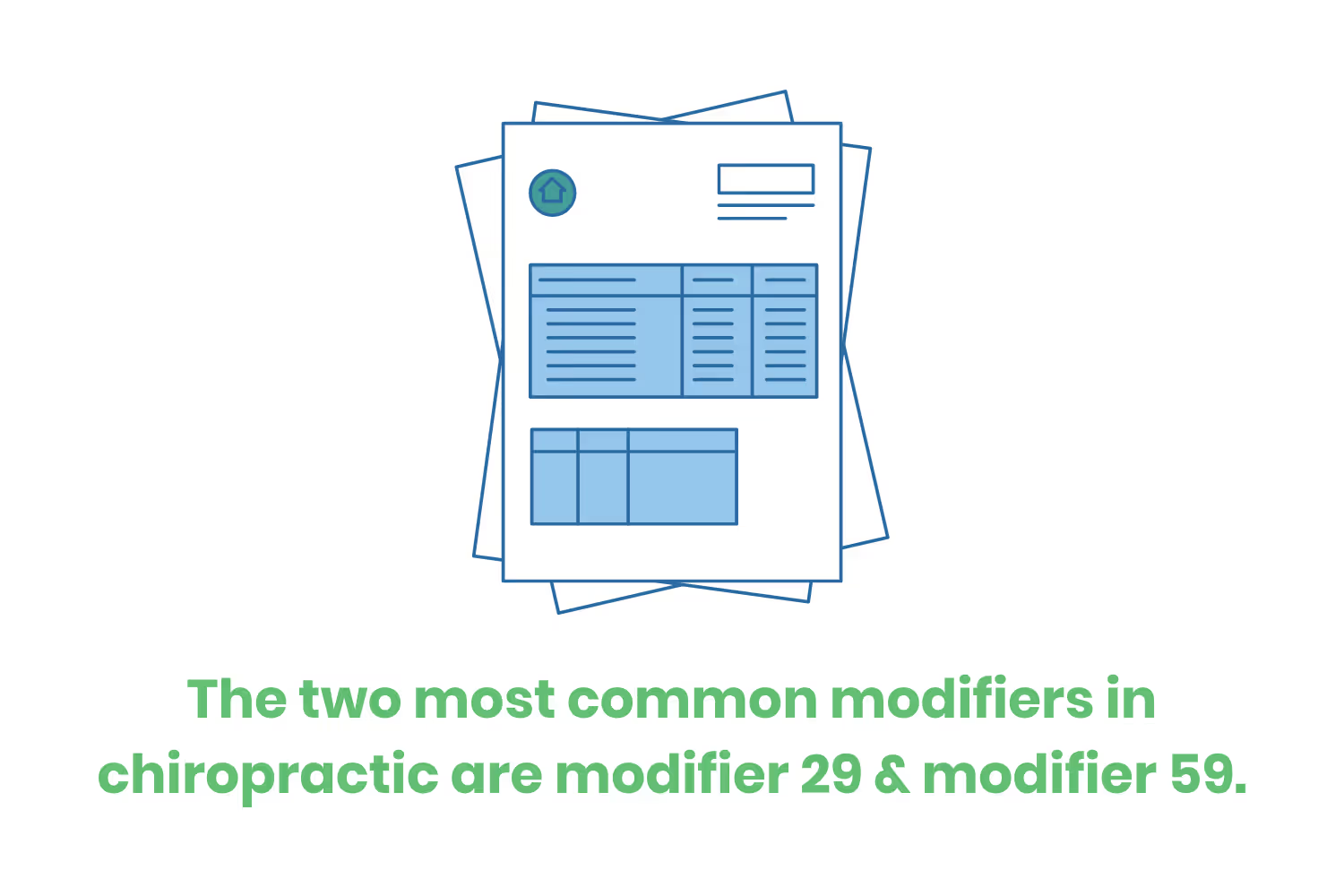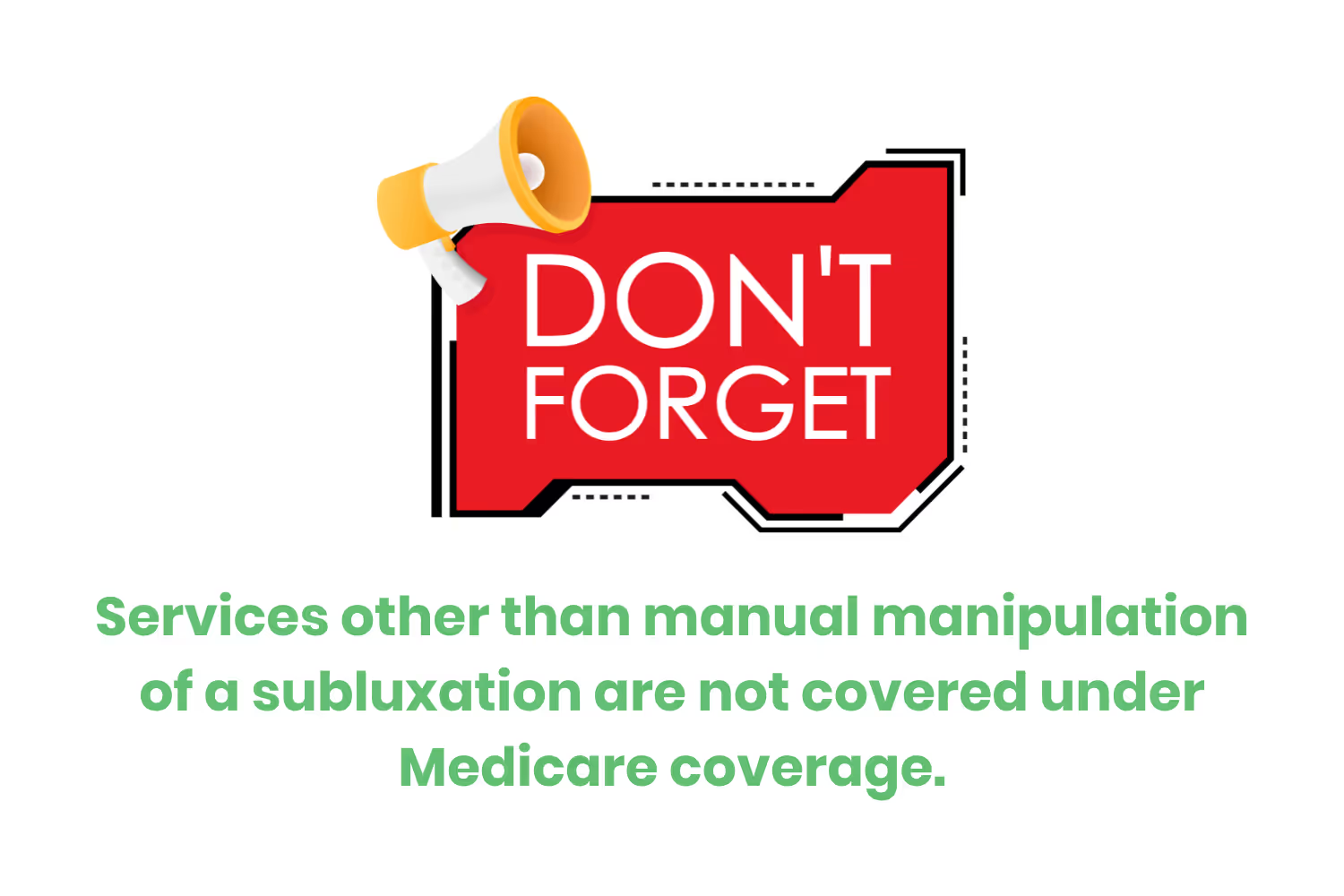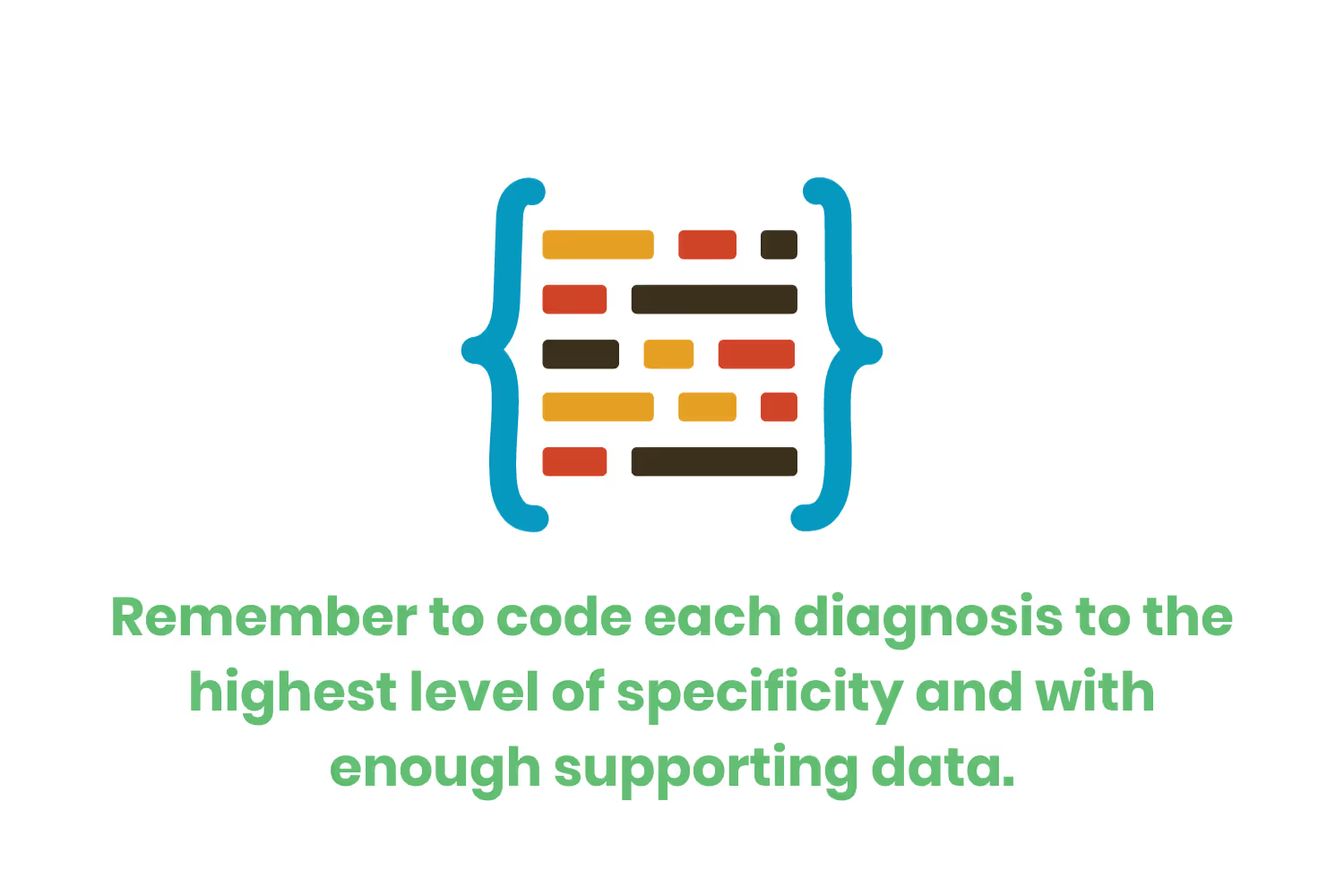Medical Billing for Chiropractic CPT Codes: An Ultimate Guide
By navigating the insurance billing process, your chiropractic organization will easily expand its reach through your community. Let’s go over some helpful coding guidelines to better streamline your billing procedures.

Over 35 million Americans seek treatment from chiropractors every year. Due to this already existing high demand, providers can afford to accommodate potential clients’ needs. What I am trying to say is that accepting insurance plans will not only benefit your clients - but benefit you, too.
As an organization that works with insurance, you can expect your client base to grow. You can also look forward to strengthening your relationships with existing patients. Practices that accept insurance offer a means for patients of all economic backgrounds to receive the medical treatment they need. A stronger relationship between you and a patient means the likelihood of returning clients is high.

Becoming in-network with insurance providers can also help you to reach new clients. When a client is looking for a new provider, they are likely to refer to their insurance company for an affordable option. Having your practice come up as an in-network provider raises the likelihood that clients will work with you.
By navigating the insurance billing process, your chiropractic organization will easily expand its reach through your community. Let’s go over some helpful coding guidelines to better streamline your billing procedures.
Chiropractic Practice & Medical Billing
Did you know that receiving regular chiropractic care can reduce the number of hospital visits by 60%? Consistent treatment can help lower bodily inflammation. So making this service available to the public should be a priority! Reducing the pressure on hospital staff across the nation would mean:
- Better patient care.
- Reduced costs.
- Less employee turnover/burnout.
Making these services more widely available to the public is possible through the use of insurance. However, fully covered treatments in chiropractic services can be difficult to maneuver on the billing side of things.

Before prescribing treatment, the chiropractor must perform a broad assessment of the patient. There must be an identifiable need if you hope to have your treatment covered. This is true for most practices of medicine, so nothing groundbreaking here. It is how you determine what is a problem that may confuse patients.
Chiropractic examinations emphasize the spinal column and nervous system. Normally, the chiropractor sees their patient for joint dysfunction, known as subluxation. Subluxation is also referred to as vertebral subluxation complex (VSC), or vertebral subluxation syndrome (VSS).
But what is subluxation? It is a term used to describe a spinal vertebrae that is out of place. First and foremost, as a chiropractor, your job is to first conduct an examination to determine if there is a subluxation. The following portion of your examination can then focus on what pathophysiological problems relate with the subluxation.
I mention all of this to note that insurance coverage only applies to the manual manipulation for the treatment of the subluxation. Any other findings, after the subluxation, will serve as a modifier or qualifier. Speaking of modifiers and qualifiers, let’s take a look at how to bill chiropractic procedures and treatments.

Current Procedural Terminology (CPT) Codes
When discussing billing and coding in the chiropractic space, it’s important to understand some keywords. Take the current procedural terminology (CPT) codes for example. The American Medical Association maintains these five alpha-numeric codes. They help standardize the system which describes any medical, surgical, or diagnostic services. It also sets the grounds for what the provider would like to receive reimbursement for.
Each branch of medicine has its own group of most commonly used CPT codes, and this is no different for chiropractors. Most chiropractors use Category 1 codes. These specific codes describe services provided by healthcare providers in both inpatient and outpatient settings.
As I mentioned before, it is important to keep in mind that modifiers often accompany your CPT codes. These act as a notification to your insurance company that the services provided we altered slightly. If the CPT code you choose requires a modifier and you forget to add it, that means a rejected claim. The two most common modifiers in chiropractic care:
- Modifier 25 - “significant, separately identifiable evaluation and management [E/M] service by the same physician on the same day of the procedure or other service”
- Modifier 59 - “a procedure or service was distinct or independent from other non-E/M services performed on the same day”
Include these modifiers to ensure the maximum reimbursement for your services!

Common Chriopractic CPT Codes
As the language of medical billing, CPT codes are essential for chiropractors to understand. There are four main CPT codes chiropractors use often. Each code indicates the part of the spine that received treatment. Let’s go over them now:
- 98940 - Chiropractic manipulative treatment (CMT). Spinal, 1-2 regions. Manipulations involving one to two regions. Single patient encounter.
- 98941 - Chiropractic manipulative treatment (CMT). Spinal, 3-4 regions. Manipulation involves three to four distinct spinal regions.
- 98942 - Chiropractic manipulative treatment (CMT). Spinal, 5 regions. Manipulation of all five spinal regions.
- 98943 - Chiropractic manipulative treatment (CMT). Extraspinal, 1 or more regions.
Make sure to thoroughly document data supporting the medical necessity of the treatment. ICD codes are useful when it comes to thorough documentation. They complement your CPT codes, describing the diagnosis of the patient. You cannot submit claims without diagnosis codes. This is a sure way to see your claim denied by the payer for not being medically necessary.
Coding Guidelines
Coding for chiropractors must be precise and well-documented. Here are some general coding and billing guidelines to follow to ensure quick reimbursement:
- The level of subluxation must be on the claim. You must also list it as the primary diagnosis. The secondary diagnosis is a neuromusculoskeletal condition requiring treatment.
- Chiropractic claims must include: The date of initiation of the course of treatment, date of service, and place of service. Procedure code, symptom/condition/secondary diagnosis code(s), and subluxation(s)/Primary diagnosis code(s). If you fail to report any of these items, you will face a claim delay or denial.
- Limitation of Liability provision. This rule applies, which protects beneficiaries from liability in denial cases when services rendered are otherwise medically unnecessary.
- Physician signature. This applies for progress notes and reports.

Note that services other than manual manipulation of a subluxation are not covered under Medicare coverage. These services include (but are not limited to):
- Prescriptions
- MRI, x-rays, CT scan.
- Lab tests.
- Injections.
- Orthopedic equipment.
Chiropractors may want to still submit these charges to Medicare, however. This is to obtain a denial necessary for submitting to a secondary insurance carrier for coverage. Medicare also does not cover chiropractic treatments to extraspinal regions, which includes:
- Head.
- Upper and lower extremities.
- Rib Cage.
- Abdomen.
Now, let’s go over the different categories of chiropractic CPT codes.
Categories
The level of subluxation goes here as the CPT code, explaining which segment of the spine the provider is manipulating. This information is the primary diagnosis of the claim. The neuromusculoskeletal issue the patient suffers from is the secondary diagnosis. Note that there are only a handful of ICD-10-CM diagnosis codes that Medicare covers here.
Remember to code each diagnosis to the highest level of specificity and with enough supporting data. For example, utilizing an x-ray or documenting a physical examination is ideal when supporting your primary diagnosis.

CPT codes 98940, 98941, or 98942, must contain an active treatment (AT) modifier. If you do not include this modifier, the treatment will not count as medically necessary.
The following categories are for further secondary diagnosis use:
- Category 2 - These ICD-10-CM codes are for short-term treatment.
- Category 3 - These ICD-10-CM codes are for moderate-term treatment.
- Category 4 - These ICD-10-CM codes are for long-term treatment.
Once the patient reaches the maximum therapeutic benefit in their treatment, ongoing maintenance is not considered medically necessary. Therefore, Medicare programs will no longer cover visits.
Tips
I know I threw a lot at you, so let’s go over some basic tips when it comes to making your chiropractic billing process go smoothly. First, be sure to verify your patient’s benefits! You can learn critical information before you even get started, such as how many sessions they have covered.
By collecting this information first thing, you can reduce claim denials and administrative burden on your team down the line. Not to mention, keep that open communication with your clients to make sure they know what they are financially responsible for.

Next, take good notes! The more supporting data for a prescribed treatment, the better. Patient charts in any healthcare space must be specific and detailed. Such specifics might include:
- The need for treatment.
- The objectives of treatment.
- How you will measure client progress.
- The actual progress made.
- The overall treatment plan.
Keeping detailed notes will help you provide more effective treatment while allowing your staff to properly bill your payer!
Finally, take your time filling out insurance claims. Avoid simple mistakes by ensuring your team is filling out the paperwork correctly. This is when noting your patient’s benefits information comes into play. The earlier you collect that information, the better for your billing team. Also, be sure to collect the following information:
- Basic client information and demographics.
- Insurance information.
- Diagnoses.
- Referring provider information.
Consider using a clearinghouse to scrub your claims for errors before sending them to your insurance payer.
Conclusion
The benefits of understanding and correctly implementing chiropractic CPT codes are great. By correctly utilizing CPT codes in medical billing, you can ensure quick reimbursement. Accurate coding helps healthcare professionals collect on services provided, preventing revenue loss from claim denials. Clear communication with patients and insurance providers also facilitates a more streamlined claims process.
Proper coding can also help ensure your team understands the importance of healthcare regulation compliance, reducing the risk of audits. Most importantly, you are improving patient care.
Emphasize your product's unique features or benefits to differentiate it from competitors
In nec dictum adipiscing pharetra enim etiam scelerisque dolor purus ipsum egestas cursus vulputate arcu egestas ut eu sed mollis consectetur mattis pharetra curabitur et maecenas in mattis fames consectetur ipsum quis risus mauris aliquam ornare nisl purus at ipsum nulla accumsan consectetur vestibulum suspendisse aliquam condimentum scelerisque lacinia pellentesque vestibulum condimentum turpis ligula pharetra dictum sapien facilisis sapien at sagittis et cursus congue.
- Pharetra curabitur et maecenas in mattis fames consectetur ipsum quis risus.
- Justo urna nisi auctor consequat consectetur dolor lectus blandit.
- Eget egestas volutpat lacinia vestibulum vitae mattis hendrerit.
- Ornare elit odio tellus orci bibendum dictum id sem congue enim amet diam.
Incorporate statistics or specific numbers to highlight the effectiveness or popularity of your offering
Convallis pellentesque ullamcorper sapien sed tristique fermentum proin amet quam tincidunt feugiat vitae neque quisque odio ut pellentesque ac mauris eget lectus. Pretium arcu turpis lacus sapien sit at eu sapien duis magna nunc nibh nam non ut nibh ultrices ultrices elementum egestas enim nisl sed cursus pellentesque sit dignissim enim euismod sit et convallis sed pelis viverra quam at nisl sit pharetra enim nisl nec vestibulum posuere in volutpat sed blandit neque risus.

Use time-sensitive language to encourage immediate action, such as "Limited Time Offer
Feugiat vitae neque quisque odio ut pellentesque ac mauris eget lectus. Pretium arcu turpis lacus sapien sit at eu sapien duis magna nunc nibh nam non ut nibh ultrices ultrices elementum egestas enim nisl sed cursus pellentesque sit dignissim enim euismod sit et convallis sed pelis viverra quam at nisl sit pharetra enim nisl nec vestibulum posuere in volutpat sed blandit neque risus.
- Pharetra curabitur et maecenas in mattis fames consectetur ipsum quis risus.
- Justo urna nisi auctor consequat consectetur dolor lectus blandit.
- Eget egestas volutpat lacinia vestibulum vitae mattis hendrerit.
- Ornare elit odio tellus orci bibendum dictum id sem congue enim amet diam.
Address customer pain points directly by showing how your product solves their problems
Feugiat vitae neque quisque odio ut pellentesque ac mauris eget lectus. Pretium arcu turpis lacus sapien sit at eu sapien duis magna nunc nibh nam non ut nibh ultrices ultrices elementum egestas enim nisl sed cursus pellentesque sit dignissim enim euismod sit et convallis sed pelis viverra quam at nisl sit pharetra enim nisl nec vestibulum posuere in volutpat sed blandit neque risus.
Vel etiam vel amet aenean eget in habitasse nunc duis tellus sem turpis risus aliquam ac volutpat tellus eu faucibus ullamcorper.
Tailor titles to your ideal customer segment using phrases like "Designed for Busy Professionals
Sed pretium id nibh id sit felis vitae volutpat volutpat adipiscing at sodales neque lectus mi phasellus commodo at elit suspendisse ornare faucibus lectus purus viverra in nec aliquet commodo et sed sed nisi tempor mi pellentesque arcu viverra pretium duis enim vulputate dignissim etiam ultrices vitae neque urna proin nibh diam turpis augue lacus.




